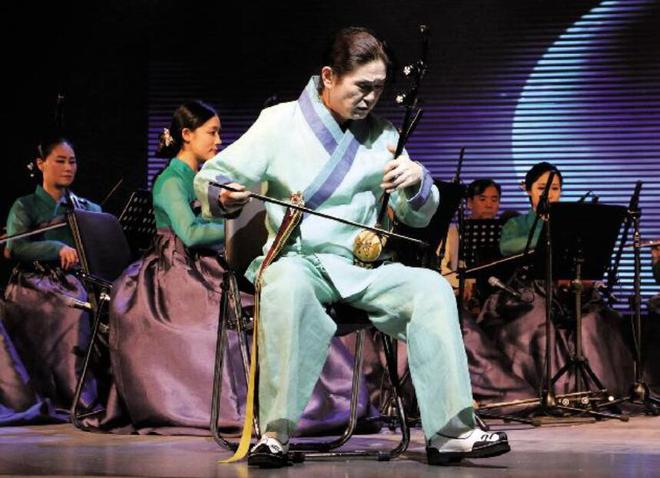The only stringed instrument among the Korean national musical instruments: Xiqin
Xiqin, introduced from North Korea during the Tang and Song Dynasties, is also known as Huqin, Jiqin, Xihu, Xianghu, etc. It is popular in Liaoning, Jilin, Heilongjiang and other provinces, especially in Yanbian Korean Autonomous Prefecture of Jilin Province.
Its shape is similar to the modern banhu, with a total length of 85 cm. The head of the piano is made of thick black-spotted bamboo roots; the stem is made of black-spotted bamboo joints, which gives a simple and straight visual effect; It shows a round and thick beauty; the pegs are wooden cones or gourds; the strings are made of steel wire, and the vibration panel is made of sycamore; the bow is made of horsetail and thin bamboo poles.

When playing, take a seated position, place the qin tube on the left leg, hold the qin in the left hand, and press the strings at the bend of the first joint of the index finger, middle finger, ring finger and little finger, and hold the bow with the five fingers of the right hand or hold the bow with the thumb, index finger, and middle finger. Play between the two strings. Its pronunciation is bright and round, the tone is melodious and pleasant, the volume is also large, and the range is increased to three octaves. It can be used for solo, ensemble or accompaniment, especially for solo, it is the only stringed instrument among the Korean national musical instruments. It is widely used in orchestral ensemble, dance accompaniment, folk accompaniment and other programs.
His famous solo pieces include "Weaving Ballad", "Xiqin·Sanqu", "Fisherman's Song" and "Farmer's Music". As an important carrier and expression form of Korean traditional culture and art, it has high historical, cultural and artistic value.
On May 24, 2021, the art of the Korean Xiqin was included in the fifth batch of representative projects of national intangible cultural heritage.
 渝公网安备 50010702504639号
渝公网安备 50010702504639号